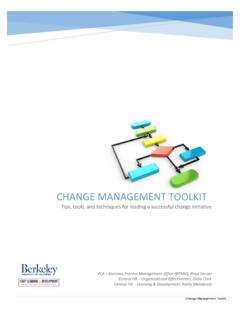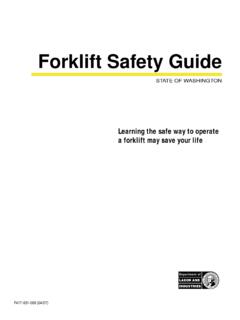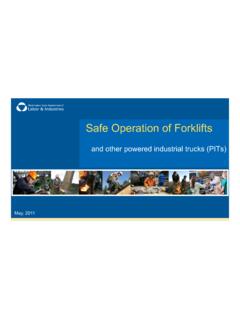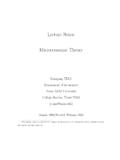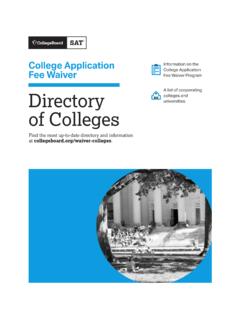Transcription of Lecture 8: Public Goods - Harvard University
1 Lecture 8: Public GoodsStefanie StantchevaFall 2017131 Public Goods : DEFINITIONSPure Public Goods : Goods that are perfectlynon-rival in consumptionandarenon-excludableNon-rival in consumption: One individual s consumption of a good doesnot affect another s opportunity to consume the : Individuals cannot deny each other the opportunity toconsume a Public Goods : Goods that satisfy the two Public good conditions(non-rival in consumption and non-excludable) to some extent, but not Finance and Public Policy Jonathan Gruber Fourth Edition Copyright 2012 Worth Publishers5of 28C H A P T E R 7 P U B L I C G O O D Pure and Impure Public GoodsIs the good rival in consumption?Is thegood excludable?YesNoYesPrivate good (ice cream)Impurepublic good (Cable TV)NoImpure Public good (crowded sidewalk) Public good (defense)OPTIMAL PROVISION OF PRIVATE GOODSTwo Goods :ic(ice-cream) andc(cookies) with pricesPic,PcPc=1is normalized to one (num raire good ):Two individualsBandJdemand different quantities of the good at thesame market ,c=MUic/MUc= # cookies the consumer is willing to give up for 1ice-creamThe optimality condition for the consumption of private Goods is written as:MRSBic,c=MRSJic,c=Pic/Pc=PicEquilibri um on the supply side requires:MCic=PicIn equilibrium, therefore.
2 MRSBic,c=MRSJic,c=MC431 Public Finance and Public Policy Jonathan Gruber Fourth Edition Copyright 2012 Worth Publishers8of 28C H A P T E R 7 P U B L I C G O O D SPrice of ice cream conePrice of ice cream conePrice of ice cream coneQuantity of conesQuantity of conesQuantity of cones$2$2$2213000 DBDJES =SMCDB&J=SMB To find social demand curve, add quantity at each price sum Summation in the Private Goods s MarginalBenefitJerry s MarginalBenefitMarketOPTIMAL PROVISION OF Public GOODSR eplace private good ice-creamicby a Public good missilesmMRSBm,c= # cookies B is willing to give up for 1 missileMRSJm,c= # cookies J is willing to give up for 1 missileIn net, society is willing to give upMRSBm,c+MRSJm,ccookies for 1 missileSocial-efficiency-maximizing condition for the Public good is:MRSBm,c+MRSJm,c=MCSocial efficiency is maximized when the marginal cost is set equal to thesum of theMRSs, rather than being set equal to each is called theSamuelson rule(Samuelson, 1954)631 Public Finance and Public Policy Jonathan Gruber Fourth Edition Copyright 2012 Worth Publishers10of 28C H A P T E R 7 P U B L I C G O O D SPrice of missilesPrice of missilesPrice of missilesQuantity of missilesQuantity of missilesQuantity of missilesDBDJS =SMCDB&J=SMB$21000$4$623151515 Vertical Summation in the Public Goods s marginal benefitJerry s marginal benefitSocial marginal benefit and costPRIVATE-SECTOR UNDERPROVISIONP rivate sector provision such thatMRSmc=MCmfor each individual sothat MRSmc>MCm Outcome is not efficient, could improve thewelfare of everybody by having more missiles (and less cookies)Free rider problem.
3 When an investment has a personal cost but acommon benefit, individuals will of thefree riderproblem, the private market undersupplies publicgoodsAnother way to see it: private provision of a Public good creates a positiveexternality (as everybody else benefits) Goods with positive externalitiesare under-supplied by the market831 PRIVATE PROVISION OF Public GOOD2 individuals with identical utility functions defined onXprivate good (cookies) andFpublic good (fireworks)F=F1+F2whereFiis contribution of individualiUtility of individualiisUi=2 log(Xi) +log(F1+F2)with budgetXi+Fi=100 Individual 1 choosesF1to maximize2 log(100 F1) +log(F1+F2)takingF2as givenFirst order condition: 2/(100 F1) +1/(F1+F2) =0 F1= (100 2F2)/3 Note thatF1goes down withF2due to the free rider problem (called thereaction curve, show graph)Symmetrically, we haveF2= (100 2F1)/3931 PRIVATE PROVISION OF Public GOODNash equilibrium definition:Each agent maximizes his objective taking as giventhe actions of the other agentsAt the Nash equilibrium, the two reaction curves intersect:F1= (100 2F2)/3andF2= (100 2F1)/3 F1+F2= (200 2(F1+F2))/3 F=F1+F2=200/5=40 F1=F2=20 What is the Social Optimum?
4 MRS=MC=1 MRSiFX=MUiF/MUiX= (1/(F1+F2))/(2/Xi) =Xi/(2F) MRSi= (X1+X2)/(2F) = (200 F)/(2F) MRSi=1 200 F=2F F=200/3= >40 Public good is under-provided by the market1031 0 Private Provision of Public good 50 F1 F2 100/3 F1 best response F1 = (100 2*F2)/3 0 Private Provision of Public good 50 F1 F2 100/3 F1 best response F1 = (100 2*F2)/3 50 100/3 F2 best response F2 = (100 2*F1)/3 0 Private Provision of Public good 50 F1 F2 100/3 F1 best response F1 = (100 2*F2)/3 50 100/3 F2 best response F2 = (100 2*F1)/3 Nash Equilibrium 20 20 Can Private Provision Overcome Free Rider Problem?The free rider problem does not lead to a complete absence of privateprovision of Public Goods . Private provision works better when:1) Some Individuals Care More than Others:Private provision is particularly likely to surmount the free rider problem whenindividuals are not identical, and when some individuals have an especially highdemand for the Public ) Altruism:When individuals value the benefits and costs to others in making theirconsumption ) Warm Glow:Model of Public Goods provision in which individuals care about both the totalamount of the Public good and their particular contributions as evidence on free ridingLaboratory experiments are a great device to test economic theoriesSubjects (often students) are brought to the lab where they sit through acomputer team game and get paid based on the game outcomesMany Public good lab experiments.
5 Example (Marwell and Ames 1981):- 10 repetitions for each game- In each game, group of 5 people, each with 10 tokens to allocate betweencash and Public If take token in cash, get $1 in cash for yourself. If contribute to commongood, get $.5 to each of all five evidence on free riding (cont.)Nash equilibrium: get everything in cashSocially optimal equilibrium: contribute everything to Public goodIn the lab, subjects contribute about 50% to Public good , but Public goodcontributions fall as game is repeated (Isaac, McCue, and Plott, 1985)Explanations: people are willing to cooperate at first but get upset andretaliate if others take advantage of them1631 Crowding out of private contributions by govt provisionSuppose government forces each individual to provide 5 so that nowF=F1+F2+10whereFiis voluntary contribution of individualiUtility of individualiisUi=2 log(Xi) +log(F1+F2+10)with budgetXi+Fi=95 You will find that the private optimum is such thatF1=F2=15so thatgovernment forced contribution crowds out one-to-one private contributionsWhy?
6 RenameF i=Fi+5. ChoosingF iis equivalent to choosingFi:Ui=2 log(Xi) +log(F 1+F 2)with budgetXi+F i=100 Equivalent to our initial problem with no government provision hence thesolution inF imust be the sameHowever, government forced contributions will have an effect as soon as privatecontributions fall to zero (as individuals cannot contribute negative amounts andundo government provision)1731 EMPIRICAL EVIDENCE ON CROWD-OUTTwo strands of empirical literature1) Field evidence (observational studies)2) Lab and field experimentsLab experiments show imperfect crowd-out in Public good games (whereyou compare situation with no forced Public Goods contributions and withforced Public good contributions), see Andreoni (1993).Lab experiment may not capture important motives for giving: warm glow,prestige, solicitations from fund raisers1831 CHARITABLE GIVINGC haritable giving is one form of private provision of Public good (big in theUS, 2% of National Income given to charities).Funds (1) religious activities, (2) education, (3) human services, (4) health,(5) arts, (6) various causes (environment, animal protection, etc.
7 Encouraged by government: giving can be deducted from income for incometax purposesPeople give out of (1) warm-glow (name on building), (2) reciprocity(alumni), (3) social pressure (churches), (4) altruism (poverty relief)Those effects are not captured in basic economic modelCharities have big fund-raising operations to induce people to give basedon those psychological effects1931 Empirical Evidence on Crowd-Out: Andreoni-Payne 03 Government spending crowds out private donations through two channels:willingness to donate + fundraisingUse tax return data on arts and social service organizationsPanel study: follows the same organizations overtimeResults:$1000 increase in government grant leads to $250 reduction in privatefundraisingSuggests that crowdout could be non-trivial if fundraising is a powerful source ofgenerating private contributionsSubsequent study by Andreoni and Payne confirms thisFind that $1 more of government grant to a charity leads to 56 cents less privatecontributions70 percent ($ ) due to the fundraising channelSuggests that individuals are relatively passive actors2031 Randomized field experiment to test reciprocityFalk (2007) conducted a field experiment to investigate the relevance ofreciprocity in charitable givingIn collaboration with a charitable organization, sent 10,000 Christmassolicitation letters for funding schools for street children in Bengladesh topotential donors (in Switzerland) randomized into 3 groups1) 1/3 of letters contained no gift (control group)2) 1/3 contained a small gift: one post-card (children drawings)+one-envelope(treatment 1)3) 1/3 contained a larger gift.
8 4 post-cards (children drawings)+4-envelopes(treatment 2)Likelihood of giving: 12% in control, 14% in treatment 1, 21% in treatment 2 large gift was very effective (even relative to cost)2131 Empirical Evidence on Social PressureDellavigna-List-Malmendier 12 design a door-to-door fundraiserrandomized experiment:Control: no advance warning of fund-raiser visitTreatment group 1: flyer at doorknob informs about the exact time of solicitation(hence can seek/avoid fund-raiser)Treatment group 2: same as treatment 1 but flyer has a check box Do not disturb Results (relative to control):Treatment group 1: 9-25% less likely to open door for fund-raiser, same(unconditional) givingTreatment group 2: a number of people opt out and (unconditional) giving is28-42% lower Social pressure is an important determinant of door-to-door giving anddoor-to-door fund-raising campaigns lower utility of potential donors2231 Social Prices as a Policy InstrumentTraditional focus in economics is on changing prices of economic goodsDifferent set of policy instruments: social prices Suppose people care about social norms and policy maker can manipulatesocial normsShould make status good one that generates positive large SUVs are frowned upon as gas guzzlers contributing to global warmingwhile electric cars are admiredCreates another set of policy instruments to exploreRecent examples from psychology and political science suggest that socialprice elasticities can be largeExample: Gerber, Green, Larimer 08: randomized experiment using socialpressure via letters to increase voter turnout2331 Source: Gerber, Green, and Larimer (2008) Civic duty mailing Dear Registered Voter.
9 DO YOUR CIVIC DUTY AND VOTE! Why do so many people fail to vote? We ve been talking about this problem for years, but it only seems to get worse. The whole point of democracy is that citizens are active participants in government; that we have a voice in government. Your voice starts with your vote. On August 8, remember your rights and responsibilities as a citizen. Remember to vote. DO YOUR CIVIC DUTY VOTE! Source: Gerber, Green, and Larimer (2008) Hawthorne mailing Dear Registered Voter: YOU ARE BEING STUDIED! Why do so many people fail to vote? We ve been talking about this problem for years, but it only seems to get worse. This year, we re trying to figure out why people do or do not vote. We ll be studying voter turnout in the August 8 primary election. Our analysis will be based on Public records, so you will not be contacted again or disturbed in anyway. Anything we learn about your voting or not voting will remain confidential and will not be disclosed to anyone else.
10 DO YOUR CIVIC DUTY VOTE! American Political Science ReviewVol. 102, No. 145 Source: Gerber, Green, and Larimer (2008) Neighbors mailing Dear Registered Voter: WHAT IF YOUR NEIGHBORS KNEW WHETHER YOU VOTED? Why do so many people fail to vote? We ve been talking about this problem for years, but it only seems to get worse. This year, we re taking a new approach. We re sending this mailing to you and your neighbors to publicize who does and does not vote. The chart shows the names of some of your neighbors, showing which have votes in the past. After the August 8 election, we intend to mail an updated chart. You and your neighbors will all know who voted and who did not DO YOUR CIVIC DUTY VOTE! ---------------------------------------- ------------ MAPLE DR Aug 04 Nov 04 Aug 06 9995 JOSEPH JAMES SMITH VOTED VOTED _____ 9995 JENNIFER KAY SMITH VOTED _____ 9997 RICHARD B JACKSON VOTED _____ 9999 KATHY MARIE JACKSON VOTED _____ 9987 MARIA S. JOHNSON VOTED VOTED _____ 9987 TOM JACK JOHNSON VOTED VOTED _____ Source: Gerber, Green, and Larimer (2008) Welfare Analysis of Social PricingShould social pricing be used on top of standard pricing through correctivetaxes (or tradable permits)?











